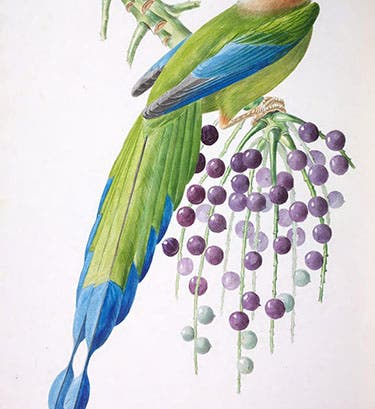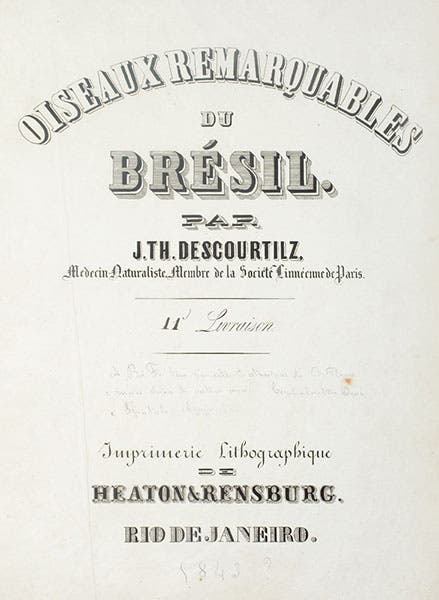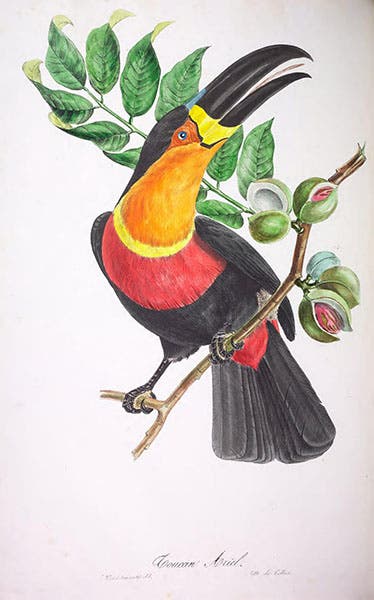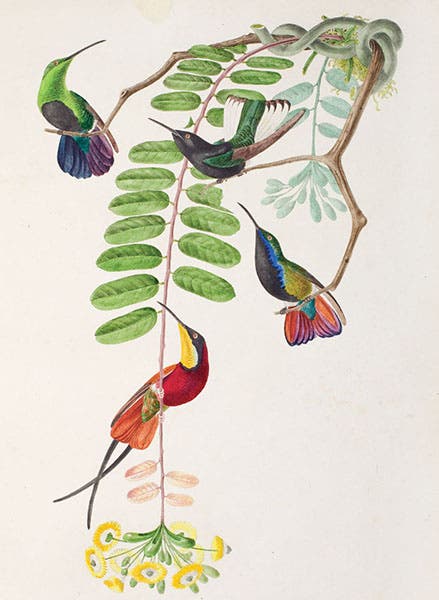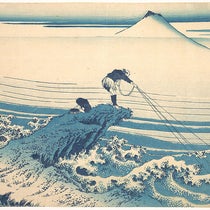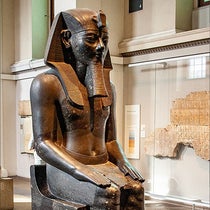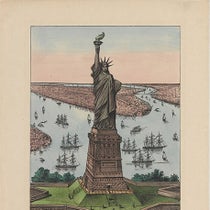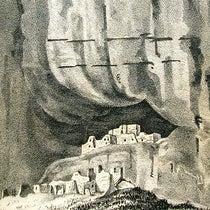Scientist of the Day - Jean-Theodore Descourtilz
Jean-Théodore Descourtilz, a French naturalist and bird illustrator, died Jan. 13, 1855, at the age of about 57. Descourtilz travelled to Brazil in 1826 and began drawing the native birds. By 1834, he had collected enough paintings to publish Oiseaux brillans du Brésil (Brilliant Birds of Brazil, 1834), with 60 hand-colored lithographs. The book consists of plates only, with no text, and was published back in Paris. It is extremely rare, with only four or five copies known world-wide. He published another bird volume nine years later, Oiseaux remarquables du Brésil (Remarkable Birds of Brazil, 1843), this one with 30 plates and published in Rio de Janeiro. It is even scarcer than the first, with two known copies in the world. Fortunately for his reputation, Descourtilz’s third and final book, Ornithologie Bresilienne ou Histoire des Oiseaux du Bresil (Brazilian Ornithology or a History of the Birds of Brazil, 1852-56), was more widely disseminated, with a dozen copies known – otherwise no one would have heard of Descourtilz at all. The third book’s imprint states that it was printed in Rio, but it actually was printed in London, which no doubt contributed somewhat to its slightly higher survival quotient.
Not surprisingly, we do not have any of Descourtilz's bird books in our Library. We do have a facsimile of his first book, but it is mostly printed in black and white, which misses the whole point of hand-colored lithography and is not really worth having, like many facsimiles. The best place to see the work of Descourtilz is at the Library of Louisiana State University (LSU), where the McIlhenny Collection has original copies of two of the Descourtilz publications. Edward A. McIlhenny has already been a Scientist of the Day – a Louisiana businessman who gave us Tabasco Sauce and amassed a rich collection of natural history books, which he bequeathed to LSU on his death in 1949. He must have had a keen eye and a thorough network of contacts to manage to acquire the two Descourtilz volumes. They were featured in a special McInhenny Collection exhibition of many of his bird books at LSU in 2011.
What makes Descourtilz worth remembering is not just the beauty and coloring of his lithographs, but his sense of composition. He seems to have realized independently of Elizabeth Gould that a bird should be represented in its natural habitat, feeding on the fruits and seeds that it consumes in real life. Descourtilz painted flowers and trees as skillfully as he did birds, and each plate is a tiny microcosm of the Neotropics.
Descourtilz came very close to disappearing completely from the historical record. Except for the few surviving copies of his books, we know practically nothing about his life or how he supported himself in Brazil. He supposedly worked for the National Museum in Rio, but we know not in what capacity. The only other fact we have about Descourtilz is not a happy one; it is documented that he died in 1855 after consuming a chemical preparation, possibly arsenic-based, that he had concocted for preserving birds; whether the consumption was accidental or intentional is not known. Fortunately the birds he preserved on paper live on. Dr. William B. Ashworth, Jr., Consultant for the History of Science, Linda Hall Library and Associate Professor emeritus, Department of History, University of Missouri-Kansas City. Comments or corrections are welcome; please direct to ashworthw@umkc.edu.

